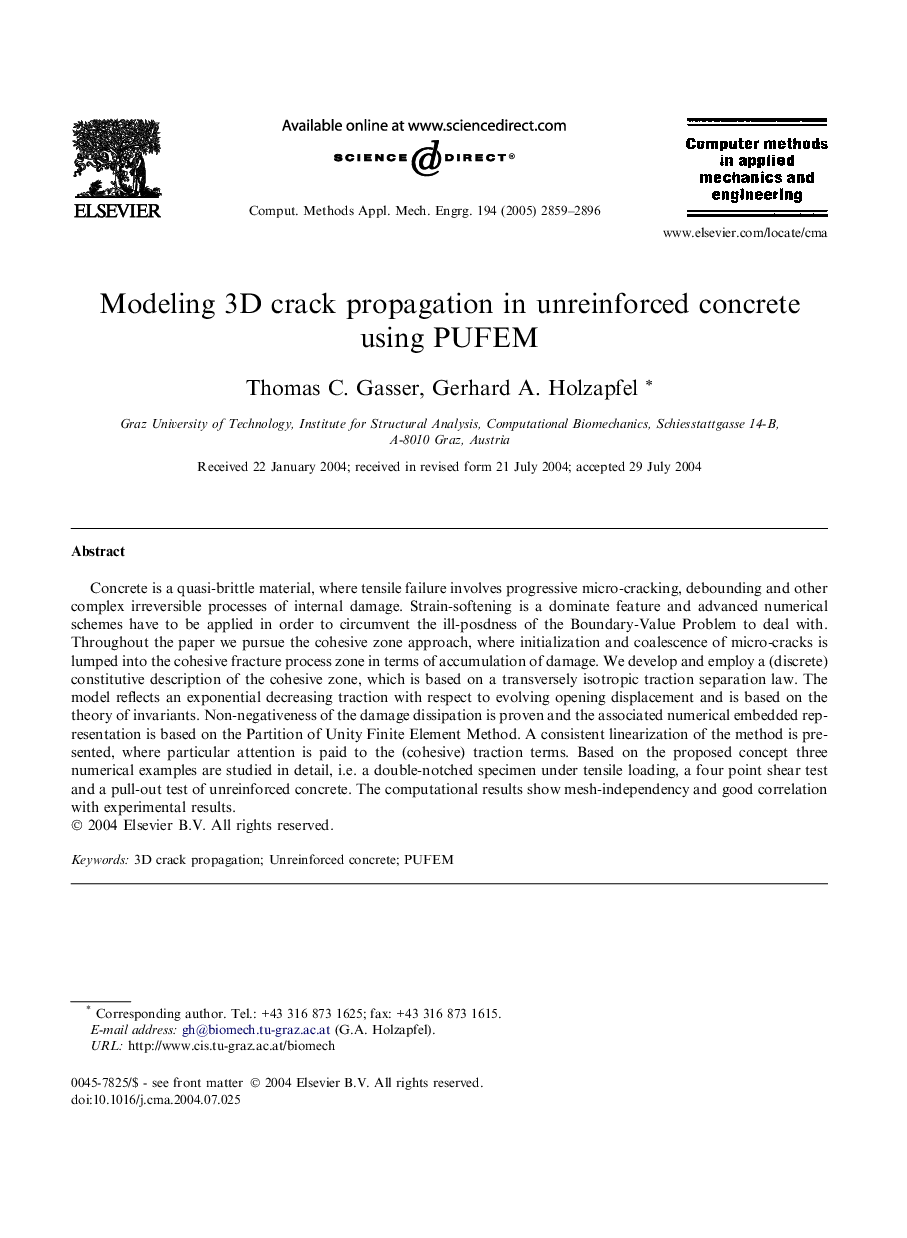| Article ID | Journal | Published Year | Pages | File Type |
|---|---|---|---|---|
| 500735 | Computer Methods in Applied Mechanics and Engineering | 2005 | 38 Pages |
Concrete is a quasi-brittle material, where tensile failure involves progressive micro-cracking, debounding and other complex irreversible processes of internal damage. Strain-softening is a dominate feature and advanced numerical schemes have to be applied in order to circumvent the ill-posdness of the Boundary-Value Problem to deal with. Throughout the paper we pursue the cohesive zone approach, where initialization and coalescence of micro-cracks is lumped into the cohesive fracture process zone in terms of accumulation of damage. We develop and employ a (discrete) constitutive description of the cohesive zone, which is based on a transversely isotropic traction separation law. The model reflects an exponential decreasing traction with respect to evolving opening displacement and is based on the theory of invariants. Non-negativeness of the damage dissipation is proven and the associated numerical embedded representation is based on the Partition of Unity Finite Element Method. A consistent linearization of the method is presented, where particular attention is paid to the (cohesive) traction terms. Based on the proposed concept three numerical examples are studied in detail, i.e. a double-notched specimen under tensile loading, a four point shear test and a pull-out test of unreinforced concrete. The computational results show mesh-independency and good correlation with experimental results.
